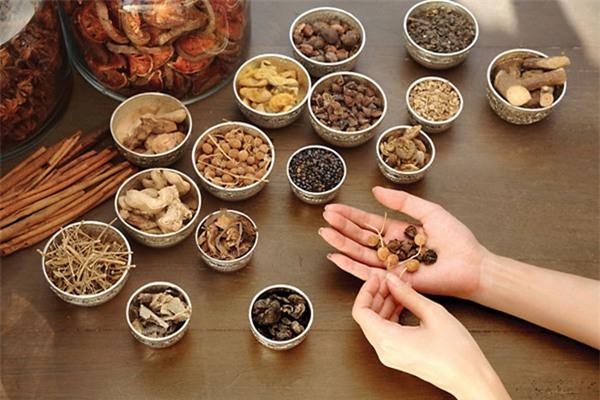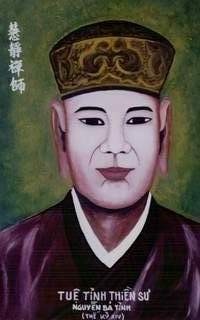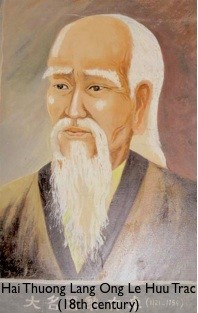A: First on our show today, we’d like to welcome Mrs L.M. Devi of India to our show. In a letter to VOV this week, Mrs. Devi reported on broadcasts at 19:00 UTC from March 1st to March 3rd on the frequency of 7280 kHz with good reception.
B: Thank you, Mrs. Devi, for your detailed reception reports. We’ll add you to our listener list and send you our program schedule, frequency list, and some QSL cards to confirm your reports. We hope to receive more feedback from you.
 Vietnam has a long-standing medical tradition that has served its people well for thousands of years Vietnam has a long-standing medical tradition that has served its people well for thousands of years
|
A: Also from India, Santib Biswas sent us a letter and a reception report for the program on January 5thon the frequency of 7280kHz. He wrote: “I’m a long time listener to VOV. The half hour English program is nice and informative about Vietnam and its culture. This is my first letter in 2017. I’m now a medical student of homoeopathy. I want to know more about the medicinal plants and trees of Vietnam.”
B: Thank you, Santib Biswas, for tuning in to our broadcast again. It has taken a long time for your letter to reach us. We’ll send you a QSL card to confirm your report.
 Tue Tinh, one of Vietnam's best known physicians in the 14th century Tue Tinh, one of Vietnam's best known physicians in the 14th century |
A: Vietnam has a long-standing medical tradition that has served its people well for thousands of years. From ancient times when the country was established, people have gathered in groups to live. These groups formed a body of knowledge of folk medicine derived from their experience in the fight for survival against accidents, natural disasters, and diseases.
B: Through trial and error, many vegetables, fruits, herbs, and natural compounds were discovered to be effective remedies. Vietnamese use ginger, sweet palm, and other herbs and compounds for disease prevention and treatment. They drink eugenia to promote digestion, chew betel with lime and areca to sweeten the breath, warm the body warm, and prevent malaria, dye teeth with lacca to protect against tooth decay, etc.
A: Over the centuries, hundreds of healing compounds have been discovered, among them pearl, tortoise-shell, aloe wood, rhinoceros horn, and cinnamon. After terracotta ware was invented, Vietnamese had the tools to steep or cook herbs. People could now ferment rice, distill fermented rice to make wine, and brew herbs to use as medicines.
B: Vietnamese people also learned how to perform acupuncture. At first, they sharpened stones to serve as needles. Eventually they learned to make copper, silver, and gold needles, and acupuncture became more refined.
A: In the period of Chinese domination (197BC-937AD), Chinese medicine profoundly affected Vietnamese medicine. At first, Chinese medicine and Vietnamese medicine were practiced separately and conflicted with each other, but gradually they blended together to form a traditional medicine which uses both Chinese and Vietnamese herbs to treat diseases.
 Hai Thuong Lan Ong Le Huu Trac, one of Vietnam's best known physicians in the 18th century Hai Thuong Lan Ong Le Huu Trac, one of Vietnam's best known physicians in the 18th century |
B:Through dozens of royal dynasties, traditional medicine continued to be refined. The two best-known physicians in Vietnamese history are Tue Tinh in the 14th century and Hai Thuong Lan Ong Le Huu Trac in the 18th century. Many acupuncturists wrote books on acupuncture and Vietnamese physicians discovered many new pressure points during this period
A: Vietnam has an abundance of plants and trees and a rich genetic biodiversity. So far, experts have identified more than 1,800 species of herbs and 40 animal species which have medicinal uses.
B: Experts have collected approximately 40,000 prescriptions, prescribed by some 12,000 physicians and handed down from generation to generation. The literature of traditional medicine includes 497 books on Chinese medicine transcribed into Vietnamese and 202 books written in Vietnamese script.Traditional medicine has been an important part of the history of Vietnamese medicine and is still quite popular in Vietnam today.
A: Before reading emails and letters from other listeners, let’s listen to a song called “Vao Ha” (Summer has come). This song is played at the request of Fumito Hokamura of Japan. Enjoy your summer, Fumito.
B: In an email to VOV this week, Richard Nowak of the US asked about amateur radio in Vietnam. How many amateur radio operators are there and what is the most popular band.
A: Radio the Voice of Vietnam, Vietnam’s national radio, is the only radio broadcasting agency in Vietnam. The agency has 6 channels: VOV1, VOV2, VOV3, VOV4, VOV5, and VOV Transportation. Since 2013, these channels have specialized: VOV1 covers news and current affairs, VOV2 culture, life, and education, VOV3 music, news, and entertainment, VOV4 ethnic affairs, VOV5 provides world service, and VOV Transportation covers transportation issues.
B: In 2015, we inaugurated the first around-the-clock English channel in Vietnam: VOV 24/7. Soon after, the VOV Health and Food Safety channel was established. VOV is developing VOV5 into a World Service channel and VOV4 into an Ethnic Service channel.
A: With the advent of the Internet and smart mobile devices, VOV’s leaders realized that becoming a multimedia organization was inevitable. In 1998, VOV Weekly, a VOV print newspaper made its debut. It was later renamed VOV Newspaper. One year later, a VOV online newspaper was launched at vov.vn. In 2008, the radio station opened a TV channel called VOVTV, which was later renamed “VOV TV Channel”.
B: Within a decade, VOV expanded from one form of media to four forms of media, which now provide more diverse, useful, and engaging information.Since February 3, 1999, all radio programs have been uploaded to the internet at vov1.vn, vov2.vn, vov3.vn, vov4.vn, vovworld.vn, vovgiaothong.vn, and vov.vn. Fan pages have been opened to reach the wider public and find news sources.
A: VOV is rapidly opening overseas bureaus. Since 1998, 10 bureaus have been established in Thailand, Laos, Cambodia, China, Japan, France, Russia, Czech Republic, Egypt, and the US. The overseas bureaus disseminate information outside Vietnam and promote Vietnam’s land and people to foreign friends. VOV plans to open new bureaus soon in Australia, Indonesia, Cuba, and India.
B: In 63 cities and provinces, we have local radio and TV stations. They are all state-owned. So, in short, there are really no amateur radio broadcasters in Vietnam.
A: This week we acknowledge emails and letters from Toshiya Nishimura of Japan; SB Sharma, Ratan Kumar Paul, and Miss Karobi Hazarika of India;and Eddy Prabowo of Indonesia.
B: We’ll verify your reception reports and we hope you’ll receive our verification cards soon. Please send your reports to English Section, Overseas Service, Voice of Vietnam, 45 Ba Trieu Street, Hanoi, Vietnam. Our email address is englishsection@vov.org.vn. Thank you for listening. Please join us again next Wednesday for another Letter Box edition. Good bye